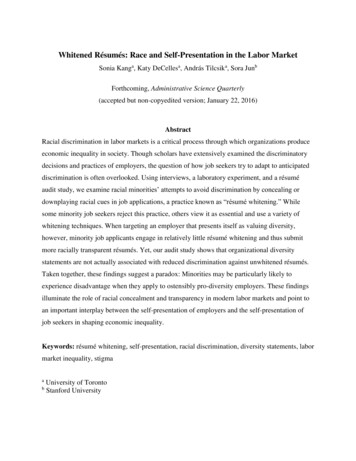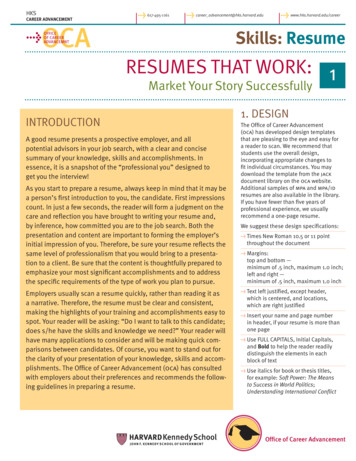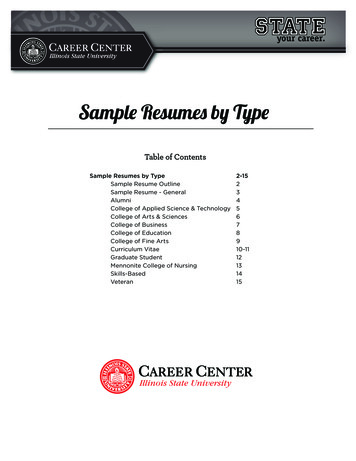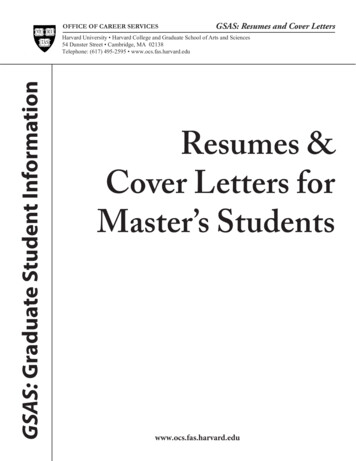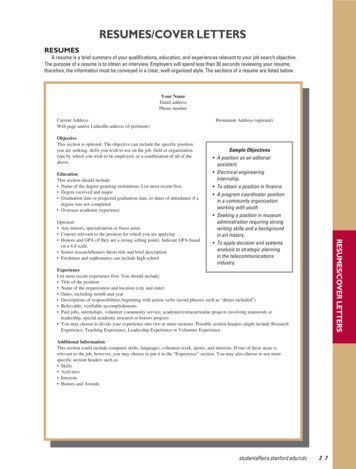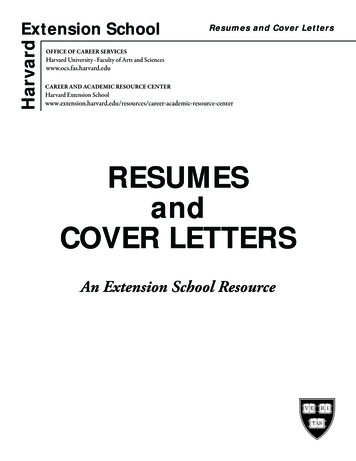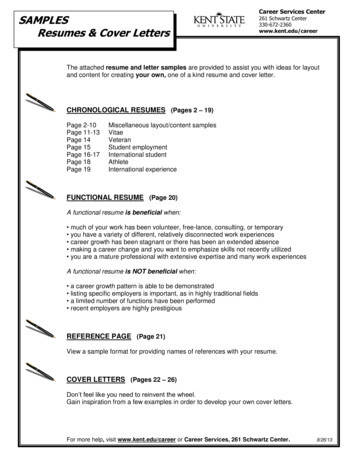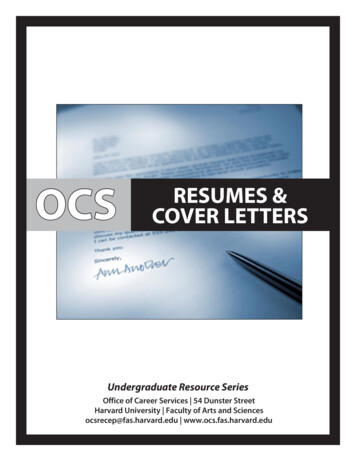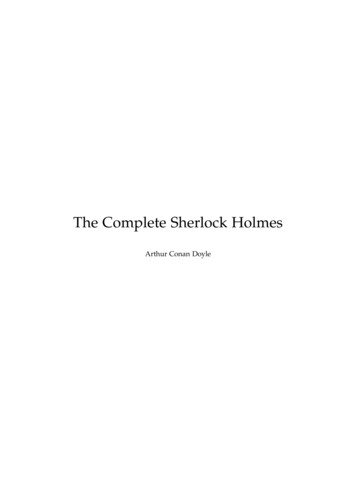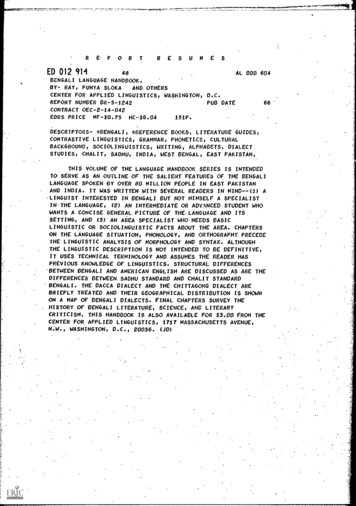
Transcription
RE-F0ED 012 911RTRESUMESAL 000 60448BENGALI LANGUAGE HANDBOOK.BY- RAY, FUNYA SLOKAAND. OTHERSCENTER FOR APPLIED LINGUISTICS, WASHINGTON, D.C.REPORT NUMBER BR-5 -1242PUB DATE66'CONTRACT OEC -2 -14 -042EDRS PRICEMF 0.75HC- 6.0415IF.DESCRIPTORS- *BENGALI, *REFERENCE BOOKS, LITERATURE GUIDES,CONTRASTIVE LINGUISTICS, GRAMMAR, PHONETICS, CULTURALBACKGROUND, SOCIOLINGUISTICS, WRITING, ALPHABETS, DIALECTSTUDIES, CHALIT, SADHU, INDIA, WEST BENGAL, EAST PAKISTAN,.THIS VOLUME OF THE LANGUAGE HANDBOOK SERIES IS INTENDEDTO SERVE AS AN OUTLINE OF THE SALIENT FEATURES OF THE BENGALILANGUAGE SPOKEN BY OVER 80 MILLION PEOPLE IN EAST PAKISTANAND INDIA. IT WAS WRITTEN WITH SEVERAL READERS IN MIND-.-(1) A-LINGUIST INTERESTED IN BENGALI BUT NOT HIMSELF A SPECIALISTINTHE LANGUAGE, (2) AN INTERMEDIATE OR ADVANCED STUDENT WHOWANTS A CONCISE'GENERAL PICTURE OF THELANGUAGE AND ITSSETTING, AND (3) AN AREA SPECIALIST WHO NEEDS BASICLINGUISTIC OR SOCIOLINGUISTIC FACTS ABOUT THE AREA. CHAPTERSON THE LANGUAGE SITUATION, PHONOLOGY, AND ORTHOGRAPHY. PRECEDETHE LINGUISTIC ANALYSIS OF MORPHOLOGY AND SYNTAX. ALTHOUGHTHE LINGUISTIC DESCRIPTION IS NOT INTENDED TO BE DEFINITIVE,IT USES TECHNICAL TERMINOLOGY AND ASSUMES THE READER HASPREVIOUS KNOWLEDGE OF LINGUISTICS. STRUCTURAL DIFFERENCES'BETWEEN BENGALI AND AMERICAN ENGLISH ARE DISCUSSED AS ARE THEDIFFERENCES BETWEEN SADHU STANDARD AND CHALIT STANDARDBENGALI. THE DACCA DIALECT AND THE CHITTAGONG DIALECT AREBRIEFLY TREATED AND THEIR GEOGRAPHICAL DISTRIBUTION IS SHOWNON A MAP OF BENGALI DIALECTS. FINAL CHAPTERS SURVEY THEHISTORY OF BENGALI LITERATURE, SCIENCE, AND LITERARYCRITICISM. THIS HANDBOOK IS ALSO AVAILABLE FOR 3.00 FROM THECENTER FOR APPLIED LINGUISTICS, 1717 MASSACHUSETTS AVENUE,WW., WASHINGTON, D.C., 20036. (JD)
50431aTA-- )p(\iUIOI (1,Pyo stCIBENGALI LANGUAGE HANDBOOKPUNYA SLOKA RAYMUHAMMAD ABDUL HAILILA RAYU.S. DEPARTMENT OF HEALTH, EDUCATION & WELFAREOFFICE OF EDUCATIONTHIS DOCUMENT HAS BEEN REPRODUCED EXACTLY AS RECEIVED FROM THEPERSON OR ORGANIZATION ORIGINATING IT. POINTS OF VIEW OR OPINIONSI STATED DO NOT NECESSARILY REPRESENT OFFICIAL OFFICE OF EDUCATIONPOSITION OR POLICY.AL 00Q 604At,
LANGUAGE HANDBOOK SERIESFRANK A. RICE, GENERAL EDITOR
--leateuresra r-4,BENGALI LANGUAGE HANDBOOKPUNYA SLOKA RAYMUHAMMAD ABDUL HAILILA RAY"PERMISSION TO REPRODUCE THISCOPYRIGHTED MATERIAL ASGRANTEDBy,ITO ERIC AND ORGANIZATIONS OPERATINGUNDER AGREEMENTS WITH THE U.S. OFFICE OFEDUCATION. FURTHER REPRODUCTION OUTSIDETHE ERIC SYSTEM REQUIRES PERMISSION OFTHE COPYRIGHT OWNER."CENTER FOR APPLIED LINGUISTICS : 1966TAL000-26047
This work was developed pursuant to a contract between theUnited States Office of Education and the Center for AppliedLinguistics and is published with the permission of theUnited States Office of Education, Department of Health,Education, and Welfare.Copyright 1966by the Center for Applied Linguistics1717 Massachusetts Avenue, N.W., Washington, D.C. 20036Library of Congress Catalog Card Number: 66-29717Printed in the United States of AmericaPrice: 3.00
INTRODUCTION TO THE SERIESEach volume in the Language Handbook Series is intended to providean outline of the salient features of a particular language and asummary of the language situation and language problems of thecountry or area in which it is spoken.The scope of the series isthe major modern languages of Asia and Africa.It is hoped that the handbooks will prove useful to severaldifferent kinds of readers.One is the linguistic specialist whois not himself a specialist in the particular language treated,e.g. an Arabist who is -interested in Bengali.Another is the stu-dent who is past the beginning stages of his study and who wishesto have a concise and condensed general picture of the languageand its setting.A third reader is the area specialist, e.g. asociologist, who wishes to know basic linguistic or sociolinguisticfacts about the area.The handbooks are not designed to serve asinstructional materials for the language in question, nor are theyintended as a guide to local customs or cultural differences orthe like.There has been some attempt to hold the handbooks to a suggested general framework so as to give the series some uniformity,but in practice the individual studies vary considerably, bothbecause of the differences of approach of the individual authorsand the range and variety of problems of the individual languages.In general, each author in his own way treats the following matters:the language in its social and historical setting, its linguisticstructure, its writing system (as appropriate), its points of contrast with English, and its literature.The description of thelinguistic structure has provided the greatest problem in presentation.The authors have made a serious effort to avoid excessiveuse of technical linguistic terminology but nevertheless a certainamount of linguistic sophistication on the part of the reader mustbe assumed.Given the status of modern linguistics as a disciplineLi].
77277-7-7'' "nINTRODUCTION 70 THE SERIESit has not seemed wise to attempt to write in a popularized style.The language handbooks represent a new kind of venture in thefield of applied linguistics.It is probable that some portionsor aspects of the various studies will be found inadequate or oflittle value, but the authors and the editor are confident thatthe series as a whole represents a useful step in the applicationof linguistic knowledge to practical language problems.Frank A. RiceDirector, Office of Information and PublicationsCenter for Applied Linguisticsiv
PREFACETHIS IS a brief reference work on the current state of theBengali language and literature.Punya Sloka Ray is res-ponsible for chapters 1-11, 13, and with Muhammad Abdul Hai,for part of chapter 12.14-17.Lila Ray is responsible for chaptersEach has depended primarily on his own research.Weoffer our regrets that the brevity of presentation has precluded any detailed justification for the analytic decisions,gratitude to all predecessors in research, and thanks to allthose who have helped the exposition, above all to Frank A.Rice, the general editor of the series:And we dedicate thebook to an eminent lover of Bengali, Abu Sayeed Ayyub.October 19644,vii
r*.vk1,weA,ABOUT THE AUTHORSIPUNYA SLOKA RAY was assistant professor of linguistics at theUniversity of Chicago at the time of writing this book, and isnew a senior fellow at the Indian Institute of Advanced Study.He has numerous publications in Indo-Aryan and Tibeto-Burmanlinguistics, as well as in the sociology and the philosophyof language.He has a book Language Standardization: Studiesin Prescriptive Linguistics (The Hague, 1963).MUHAMMAD ABDUL HAI is professor and head of the department of'Bengali at the University of Dacca.He has published Nasalsand Nasalization in.Bengali (Dacca, 1960), and, with W. J. Ball,The Sound Structures of English and Bengali (Dacca, 1961).LILA RAY is translator, critic, poet, and a member of theexecutive committee of the Indian P.E.N.She has publishedwidely in well-known journals, and among others the followingbooks: Entrance: Poems (Calcutta, 1963), Equities: Essays(Bangalore, 1955), A Challenging Decade: Bengali Literature inthe Forties (Calcutta, 1953), Broken Bread: Short Stories fromModern Bengal (Calcutta, 1957), translation of Mahbub-ul Alam'sConfessions of a Believer (Chittagong, 1957), translation ofSatinath Bhaduri's The Vigil (Bombay, 1964).ix
.Js%\\\\%\:. '."*.--.e .-.:.,*".?.s.)CHAIBASA1KEONJHAR0''. . .3,,-.1BARIPAOA. --.vi.2:MAYURBHANJSINGHBHUM0 e."-.: KEOWHARGARN :.DHENKANALSUNDARGARH.-0 GAYARANCHIHARI'-.-'."1?SAMBALRUR-.)''.--1LP A LAM AUDALTONCANJ :HAZARIBAGH.6 44Zier4di-,44,4,:.DINAJPUR.044C1HOOGHLY: Large townsDIALECTSStateBENGALI40200.'40 MilesCHITTAGONTRIPURA0 AGAR TALA.11F,TJ1/ I.&Ofil iltirH A JONa.ILC AR4SV'ftticrirr*.; i'49. "/!. .J4I.13ioKOHIAAAIMPHAL0/-.wifeMANIPUR/*/coyevi.ect ."1-ur.RANGAM%VIDIPHU,10I.ifft '40. S.CHAR\\.\*--.,. .;//44N e.,,,C4Ctit/OP1Elt280 SHILLONGHILLS:-.UNITED KHASI JAINTIABARIt4-TuRA.GAR .,.-.t.- .1sr-
TABLE OF CONTENTS1.THE LANGUAGE SITUATION12.PHONOLOGY42.1.Segmental phonemes42.2.Intonation72.3.Vocal qualifiers3.4.5.6.10ORTHOGRAPHY123.1.The Bengali script123.2.The syllabary123.3.Multiple pronunciations143.4.Vowel diacritics163.5.Other diacritics173.6.Conjunct letters183.7.Other conjunct riting203.11.Letter formation20VERB WORDS214.1.Stem classes214.2.Bisyllabic stems224.3.Verb suffixes23NOUN WORDS355.1.Case suffixes355.2.Determiner suffixes365.3.Augment375.4.Stem constituents375.5.New words40AUXILIARY es426.4.Directives43xi
TABLE OF 6.7.Specifiers476.8.Personal 536.17.Modulators53PHRASE STRUCTURE557.1.Subordinate phrases557.2.Superordinate phrases577.3.Parordinate phrases577.4.Coordinate phrases587.5.Included clause587.6.Complex phrases587.7.Compound words59SENTENCES AND CLAUSES618.1.Kinds of clauses618.2.Incomplete clauses628.3.Complete clauses628.4.Impersonal clauses658.5.Impredicative STS WITH AMERICAN ENGLISH6710.SADHU STANDARD7311.VERSE STRUCTURE7612.DACCA DIALECT8012.1.Phonemes8012.2.Demonstratives84xii
TABLE OF rb suffixes8612.6.Verb stem variation8789CHITTAGONG DIALECT13.1.Syllable initials8913.2.Syllable finals9213.3.Vowels9313.4.Tones9413.5.Intonation and accent9413.6.Noun suffixes9513.7.Noun auxiliaries9513.8.Verb auxiliaries9613.9.Verb suffixes9614.LITERATURE OF THE OLD PERIOD9815.POETRY11116.THE NOVEL11717.SCIENCE AND CRITICISM130SELECT BIBLIOGRAPHY135MAPfacing page1
1. THE LANGUAGE SITUATIONBengali is the language of over eighty million people, of whom athird live in West Bengal and Tripura, a few millions in theneighbor states within India, especially in the Cachar districtof Assam, and the bulk in East Pakistan.It is one of the four-teen national languages of India, and one of the two of Pakistan.It is used as medium of instruction up to the postgraduate levelin the humanities and up to the junior college level in thenatural sciences.It is used for religious purposes only as sub-sidiary to Sanskrit for Hindus, and to Arabic for Muslims.Thereis great attachment to and pride about the language, about theliterature, and even about the script, shared alike as these areacross the political and religious divisions.Literacy was 29per cent and urbanization 24 per cent in 19()I in West Bengal,somewhat less in East Pakistan.Other languages also spoken in the area are chiefly HindiUrdu and English, each spoken almost wholly in urban areas, whereeach is also just as adequate for most purposes of life as Bengaliis.In West Bengal alone, 276 newspapers were published in 1963in English, 93 in Hindi, and 25 in Urdu, in comparison to 513 inBengali.Also spoken are Nepali in the Darjeeling district ofWest Bengal, Santali near the western boundaries of West Bengal,and various tribal languages distantly related to Tibetan andBurmese in Tripura, in the Darjeeling district of West Bengal,and in the Chittagong Hills of East Pakistan.Calcutta is thelargest city, with a population of over six millions, and hasmany relatively isolated linguistic communities, one of thelargest of which speaks Oria.Standard Bengali is not, however, perfectly uniform.are two standards, Chalit and Sadhu.The former is now the dom-inant one, and is described more fully in this book.is also described here, but briefly.1N7,17,70;ThereThe latterIn both standards a few
THE LANGUAGE SITUATIONpeculiarities occur in the usage of some but not all Muslims, aswill be described along with the Dacca dialect.In the Chalit,the main historical contributor has been the speech of Hooghlyand Krishnagore, small towns along the river somewhat north ofCalcutta.It is not however the only ingredient, and many Chalitforms are traced to contributions by other dialects.In theSadhu, the dominant, though by no means the only contributor hadbeen the speech of late 15th century Navadvip, a center of learning a little farther north along the river.The history of the Bengali language begins in the early cenBefore this time, there wasturies of the present millenium.only a family of dialects of the common eastern Indian prakrit.In theThe Indo-Aryan languages fall into four distinct periods.first period, Vedic was the common standard.was classical Sanskrit.In the second, itIn the third, there were many prakrits.And in the fourth, it is the modern standard languages.Withinthe last period, again, two phases are distinguished for Bengali.These various standards are directly related to one another inthe line of cultural succession, but in terms of linguisticstructure are only indirectly related through a common matrix offolk speech.One has not grown or decayed into the other, buteach has been an attempt to create a uniform ideal out of thediverse and unstable speech of the people.The Chalit is nowwidely spoken, at least by all who have been to college.Of the substandard dialects, two will be described in thisbook.The Dacca dialect is important, firstly, because it isthe main ingredient in the speech to be heard in and around Dacca,the capital of East Pakistan, and secondly, because it is ratherclosely related in formal structure to the dialects of the largerpart of Bengal, including large areas in India.The Chittagongdialect is included as an example of an extremely deviant dialect.Some of the other highly deviant dialects not described in thisbook are Chakma along the Karnaphuli river in the ChittagongHills, Sylhet, Hajong in northern
chiefly Hindi-Urdu and English, each spoken almost wholly in urban areas, where each is also just as adequate for most purposes of. life as Bengali. is. In West Bengal alone, 276 newspapers were published in 1963 in English, 93 in Hindi, and 25 in Urdu, in comparison to. 513 in Bengali. F. e. t. R: in; t:: / 48. .
